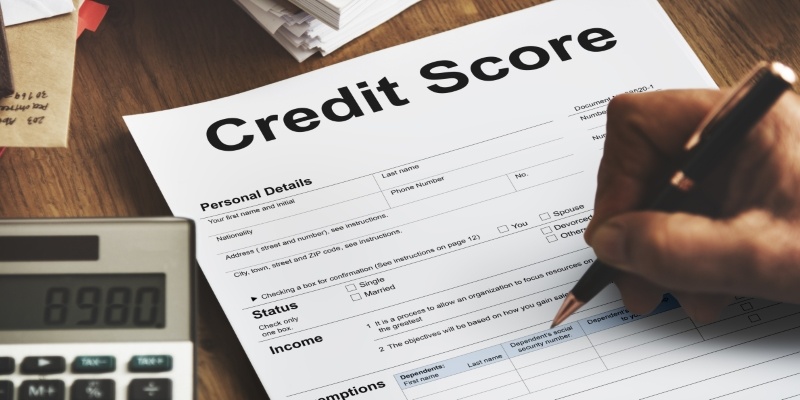Advertisement
Teachers often dedicate personal resources to provide quality education. On World Teachers' Day, it's important to highlight that teachers can ease their financial burden through tax breaks. With rising classroom costs, understanding available deductions and credits can offer significant relief.

Educators, including public school teachers, tutors, and homeschoolers, can take advantage of these benefits to reduce their expenses. The U.S. tax code acknowledges that teachers frequently cover costs like school supplies and professional development. This article outlines five key tax breaks available in 2024 to help teachers manage their finances better.
From classroom supplies to professional development, the following tax breaks are designed to help teachers offset their out-of-pocket costs and make their finances a little easier to manage.
The Educator Expense Deduction is one of the most valuable tax breaks for teachers, allowing eligible educators to deduct up to $300 for classroom expenses in 2024. If both spouses are teachers and file jointly, each can claim this deduction, potentially doubling the savings to $600. This deduction covers various costs, such as classroom supplies (books, stationery, instructional materials) and even the cost of professional development courses directly related to teaching.
For instance, if you take a course to improve your teaching skills or learn new classroom management techniques, those expenses can be deducted. While $300 may not cover all the costs a teacher incurs, it provides significant relief, especially for those who spend their own money to support student learning. Importantly, you dont need to itemize deductions to claim this benefit. As long as you work at least 900 hours in a school year as a teacher, counselor, principal, or aide, youre eligible to take advantage of this deduction.

Many states offer tax credits and deductions specifically for teachers, boosting savings when combined with federal deductions. For example, Oregon allows teachers to claim up to 25% of their unreimbursed classroom expenses on state tax returns, while Iowa and Louisiana provide similar credits.
To maximize savings, teachers should check with their state tax department or a tax professional to see which credits are available locally. Even if your state lacks teacher-specific credits, other education-related deductions, like professional development credits, may still apply to help reduce your tax burden.
As the field of education evolves, teachers often need to continue their education to stay current with new teaching methods, curriculum standards, and certifications. This is where the Lifetime Learning Credit (LLC) can make a significant difference. While not exclusive to teachers, the LLC provides an excellent opportunity for educators pursuing further education to save on their tax bills.
In 2024, the LLC allows eligible taxpayers to claim up to $2,500 per year in tax credits for tuition, fees, and other related expenses at eligible educational institutions. The credit is particularly beneficial for teachers seeking to earn an additional degree, take graduate courses, or enhance their teaching credentials. Unlike a deduction, which reduces your taxable income, a credit directly reduces the amount of tax you owe, making it particularly valuable.
However, the LLC has some limitations. To qualify, your modified adjusted gross income (MAGI) must be below $80,000 for single filers or $160,000 for married couples filing jointly. Additionally, you cannot claim both the Lifetime Learning Credit and the American Opportunity Credit in the same year, so educators need to choose the one that benefits them most.
Another often overlooked tax deduction for teachers is the ability to deduct union dues and professional membership fees. Teachers who are part of a union or professional organization, such as the National Education Association (NEA) or a state teachers' association, may be able to deduct these fees from their tax returns.
Union dues and membership fees are considered an unreimbursed employee expense under the itemized deductions section of the tax return. While this deduction was more widely used before the Tax Cuts and Jobs Act of 2017 limited certain miscellaneous deductions, its still a possibility for some teachers, especially those with significant job-related expenses.
Teachers should track their union dues, professional memberships, and any related expenses throughout the year to ensure they can claim the full deduction, if applicable. This deduction may not be as straightforward or available in all cases, but its worth discussing with a tax advisor to see if it applies to your situation.

Many teachers still have student loans from their college education, and for those who are paying them off, the Student Loan Interest Deduction offers helpful relief. In 2024, you can deduct up to $2,500 in interest paid on eligible student loans. This deduction is beneficial because you can claim it whether you itemize your deductions or choose the standard deduction.
Teachers with a modified adjusted gross income below $85,000 for single filers or $170,000 for married couples filing jointly are eligible for the Student Loan Interest Deduction. However, the deduction starts to phase out once your income exceeds these thresholds. Teachers should review their loan interest payments and income levels to determine if they qualify.
This deduction is beneficial because it reduces taxable income, making it easier to manage the cost of repaying student loans while balancing the demands of teaching. With the average student loan debt for teachers being quite significant, this deduction helps soften the financial burden many educators face long after leaving school.
Teaching is rewarding but often comes with financial strain. Fortunately, tax deductions and credits help ease these burdens. The Educator Expense Deduction, state-specific credits, Lifetime Learning Credit, union dues deductions, and Student Loan Interest Deduction offer teachers practical ways to save money and reduce financial pressure. These breaks are designed to address the unique costs educators face, allowing them to better manage their expenses while focusing on their essential role in shaping the future.
Advertisement

By Korin Kashtan/Dec 23, 2024

By Darnell Malan/Oct 20, 2024

By Paula Miller/Mar 16, 2025

By Verna Wesley/Oct 22, 2024

By Noa Ensign/Jan 15, 2025

By Celia Kreitner/Oct 24, 2024

By Aldrich Acheson/Jan 19, 2025

By Madison Evans/Nov 18, 2024

By Darnell Malan/Jan 19, 2025

By Christin Shatzman/Oct 24, 2024

By Gabrielle Bennett /Oct 23, 2024

By Pamela Andrew/Jan 19, 2025